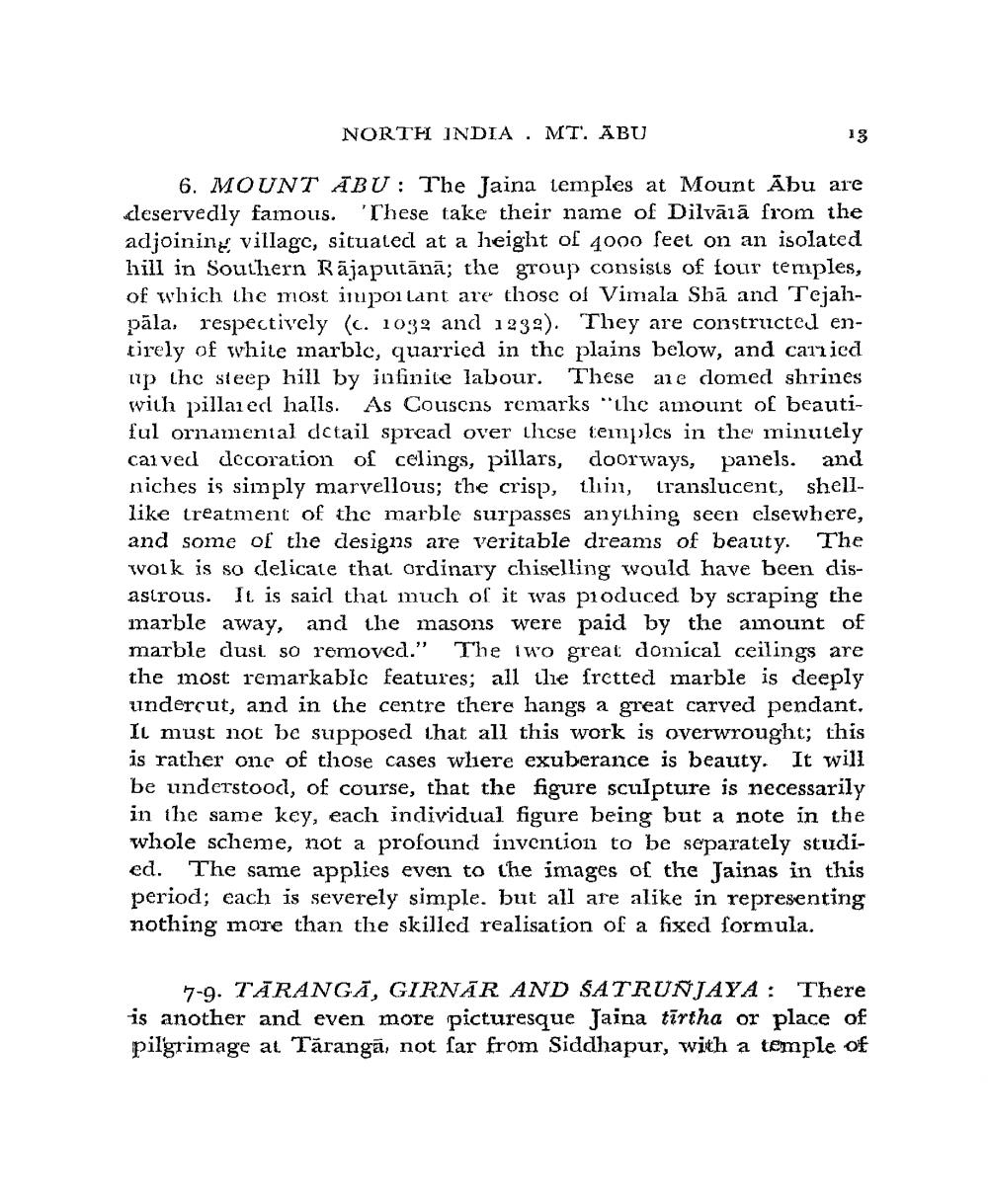________________
NORTH INDIA . MT. ABU
13
6. MOUNT ABU: The Jaina temples at Mount Abu are deservedly famous. These take their name of Dilvālā from the adjoining village, situated at a height of 4000 feet on an isolated hill in Southern Räjaputānā; the group consists of four temples, of which the most impoilant are those of Vimala Sbā and Tejahpāla, respectively (c. 1032 and 1239). They are constructed entirely of white marble, quarried in thc plains below, and carried up the steep hill by infinite labour. These are domed shrines with pillai ed halls. As Couscns remarks "the amount of beautiful ornamental detail spread over these temples in the minutely cai ved decoration of celings, pillars, doorways, panels. and niches is simply marvellous; the crisp, tlin, translucent, shelllike treatment of the marble surpasses anything seen elsewhere, and some of the designs are veritable dreams of beauty. The work is so delicate that ordinary chiselling would have been disastrous. It is said that much of it was produced by scraping the marble away, and the masons were paid by the amount of marble dust so removed." The iwo great domical ceilings are the most remarkable features; all the fretted marble is deeply undercut, and in the centre there hangs a great carved pendant, Il must not be supposed that all this work is overwrought; this is rather one of those cases whiere exuberance is beauty. It will be understood, of course, that the figure sculpture is necessarily in the same key, each individual figure being but a note in the whole scheme, not a profound invention to be separately studied. The same applies even to the images of the Jainas in this period; each is severely simple. but all are alike in representing nothing more than the skilled realisation of a fixed formula.
7-9. TĀRANGĀ, GIRNĀR AND SATRUNJAYA: There is another and even more picturesque Jaina tīrtha or place of pilgrimage at Tărangā, not far from Siddhapur, with a temple of




